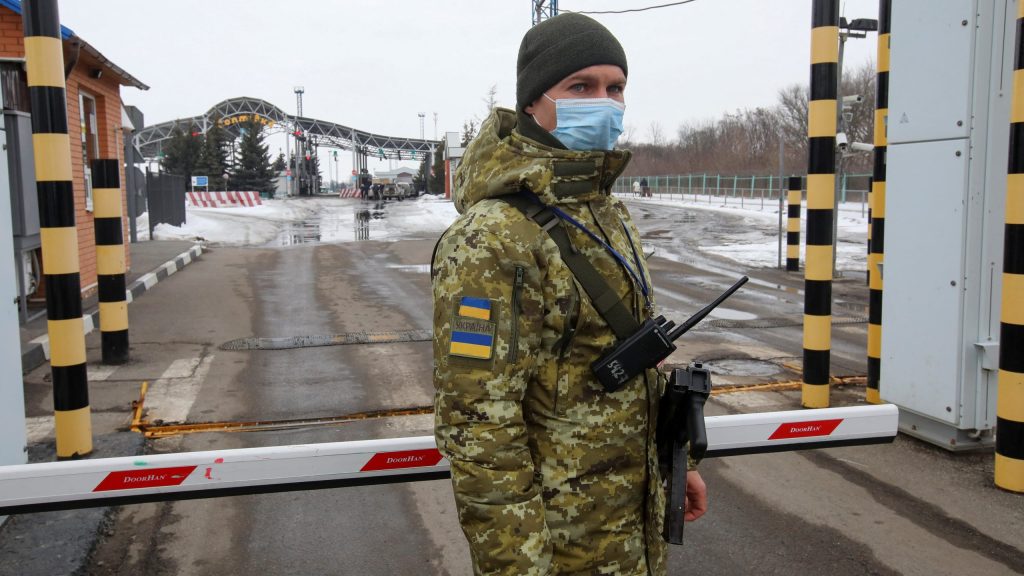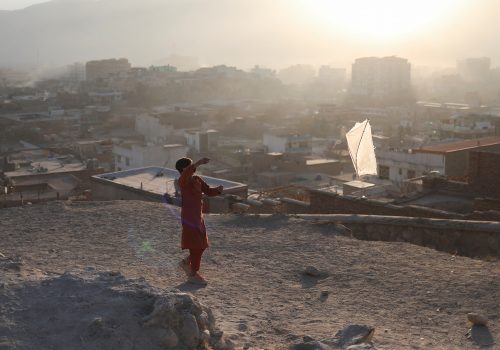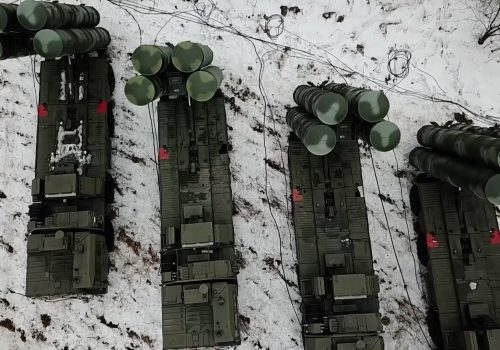Noncombatant evacuation operations (NEOs) are among the most complex non-lethal operations the United States carries out. They call on US military, diplomatic, humanitarian, and homeland-security capabilities to swiftly get civilians away from an active war zone or natural disaster to safety—prioritizing US citizens and those of allies.
Scenes of displaced Americans, allies, and refugees fleeing a possible further Russian invasion of Ukraine will cause outrage and heartbreak. As we saw with the US withdrawal from Afghanistan last August, some in the news media and political partisans will cast blame on their favorite political punching bags.
This would be wrong.
The Biden administration has been planning for the consequences of an offensive since November. But as a national security professional who was involved in most US NEOs over the past twenty years, I can confidently state: Even with the best planning in the world, a Russian invasion of Ukraine, if it happens, will result in images of chaos on cable news and social media. But it’s crucial to keep in mind that this chaos is the responsibility of Russian President Vladimir Putin.
Somewhere between seven thousand and thirty thousand Americans are currently in Ukraine, and although they’ve been told to leave immediately—because US forces will not evacuate them if Russia moves in—many will likely stay until the tanks start rolling, if previous NEOs are a guide. The United States has sent six thousand troops to Poland to help receive Americans and others who make it that far.
Within hours of any Russian missiles landing and tanks crossing the border, a mass migration will begin. Many Ukrainians will head west, likely in harsh winter weather, toward western Ukraine, Poland, Slovakia, Hungary, and Romania. Most people will have only the clothes they wear and what they can carry or fit into a car. Airports will shut down, roads will be jammed, and supplies of gasoline and diesel will dry up. Some drivers will have no choice but to abandon their vehicles by the roadside, and food deliveries will stop.
None of this chaos is unique to an evacuation from Ukraine. But it will be more challenging than previous evacuations for five reasons.
First, a Russian military operation will shut down Ukraine’s airports, especially if it includes, as Atlantic Council experts predict, precision long-range missile attacks. If any airports remain open, Putin would probably be unwilling to shoot down a US evacuation flight during a Russian offensive, but recklessness cannot be ruled out. Therefore, most people will try to travel overland.
Second, winter weather complicates humanitarian operations. Snow and mud cause civilian vehicles to get bogged down more than military ones. Most previous NEOs happened in desert countries or in the summer, such as during Russia’s 2008 invasion of Georgia. If temperatures stay below freezing, those fleeing outdoors face health hazards which people in temperate climates do not. That not only endangers people’s health but also threatens deliveries of water and other necessities.
Third, Russian cyberattacks, which will occur in concert with a ground offensive, are likely to shut down much, if not almost all, of Ukraine’s critical infrastructure. Water treatment plants could falter, electricity could be cut, and millions of people would be forced to shelter in place if they don’t head west.
Fourth, Russia’s clearly documented disinformation campaign could sow disunity among Western partners in an effort to slow or limit the Western response. In the United States, Russian disinformation could force the administration to spend time getting sufficient congressional support for assistance efforts. Meanwhile, the reluctance of some European countries to help Ukrainian refugees could leave many in dire straits—or force the Ukrainian government to expend scarce resources on internally displaced people instead of defending Ukrainian territory from invading Russian troops.
Fifth, the United States has suffered a brain drain of expertise when it comes to NEOs. Operations of the scale required to get thousands of Americans out of eastern Poland are relatively rare. Many of the most experienced US diplomats and planners left during the Trump administration, when their expertise was disparaged, and many felt pressured to quit.
There’s still much the United States can do to take care of its citizens and reduce the widespread suffering of a potential Russian invasion. Humanitarian aid will need to flow generously to millions of Ukrainians whose livelihoods will be torn away until they can re-establish themselves. The world’s refugee assistance funds are already low as a result of addressing the needs of refugees from Syria and Afghanistan, as well as war-torn Yemen. Any parts of Ukraine not under Russian assault or occupation—for example, around the western city of Lviv—could serve as Ukrainian government distribution points for that aid.
Otherwise, we are looking at the prospect of tent cities in eastern Poland until thousands of refugees can be assimilated elsewhere. Those populations should be relocated as quickly as possible, because while a Russian occupation of Ukraine can be reversed, it will not be reversed overnight.
For its part, United States will need to accept its own share of refugees, as it has done many times before. Indeed, history shows that the American experience is enriched by refugees escaping oppression to find freedom.
Another vital step for the United States and the West is to show unity against Russian aggression. Astonishingly, some current and former US officials and media figures seem unaware that by blaming anyone other than Putin for this chaos, they’re actually playing into Russia’s disinformation campaign. Somewhat ironically, Vladimir Lenin himself is believed to have written about Westerners who “will close their eyes” to “reality and will thus transform themselves into men who are deaf, dumb and blind.”
A Russian invasion of Ukraine will test Western resolve and values, including the coordination of a necessary humanitarian response. But the Russian disinformation campaign is an equally important test: Western leaders and the public need to understand that in a further invasion of Ukraine, Putin—and no one else—would be to blame for any chaos that follows.
Thomas S. Warrick is a senior advisor with the Atlantic Council’s Scowcroft Middle East Security Initiative and a nonresident senior fellow at the Scowcroft Center for Strategy and Security’s Forward Defense practice. Prior to joining the Council, he was the deputy assistant secretary for counterterrorism policy at the US Department of Homeland Security.
Further reading
Mon, Dec 13, 2021
Afghanistan is about to collapse. Here’s what the US must do about it.
New Atlanticist By
Eleven former US ambassadors and commanders issue an urgent warning to Washington and its allies.
Tue, Feb 8, 2022
US adversaries have been mastering hybrid warfare. It’s time to catch up.
Hybrid Conflict Project By Marc Polymeropoulos, Arun Iyer
Bad actors are embracing hybrid warfare. Time is of the essence for Washington to seize the advantage.
Fri, Feb 11, 2022
Russia’s joint exercise with Belarus reveals what a Ukraine invasion would look like
New Atlanticist By Tyson Wetzel
Although Union Courage '22 has only just begun, it is clear that Russia is focusing on air superiority, close air support, long-range fires, intelligence collection, and combat sustainment.
Image: A Ukrainian service member stands guard on the Ukrainian-Russian border in the Kharkiv region on February 16, 2022. Photo by Vyacheslav Madiyevskyy/REUTERS



